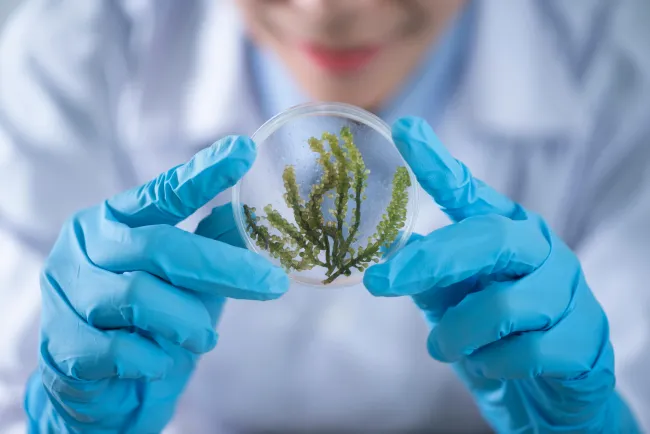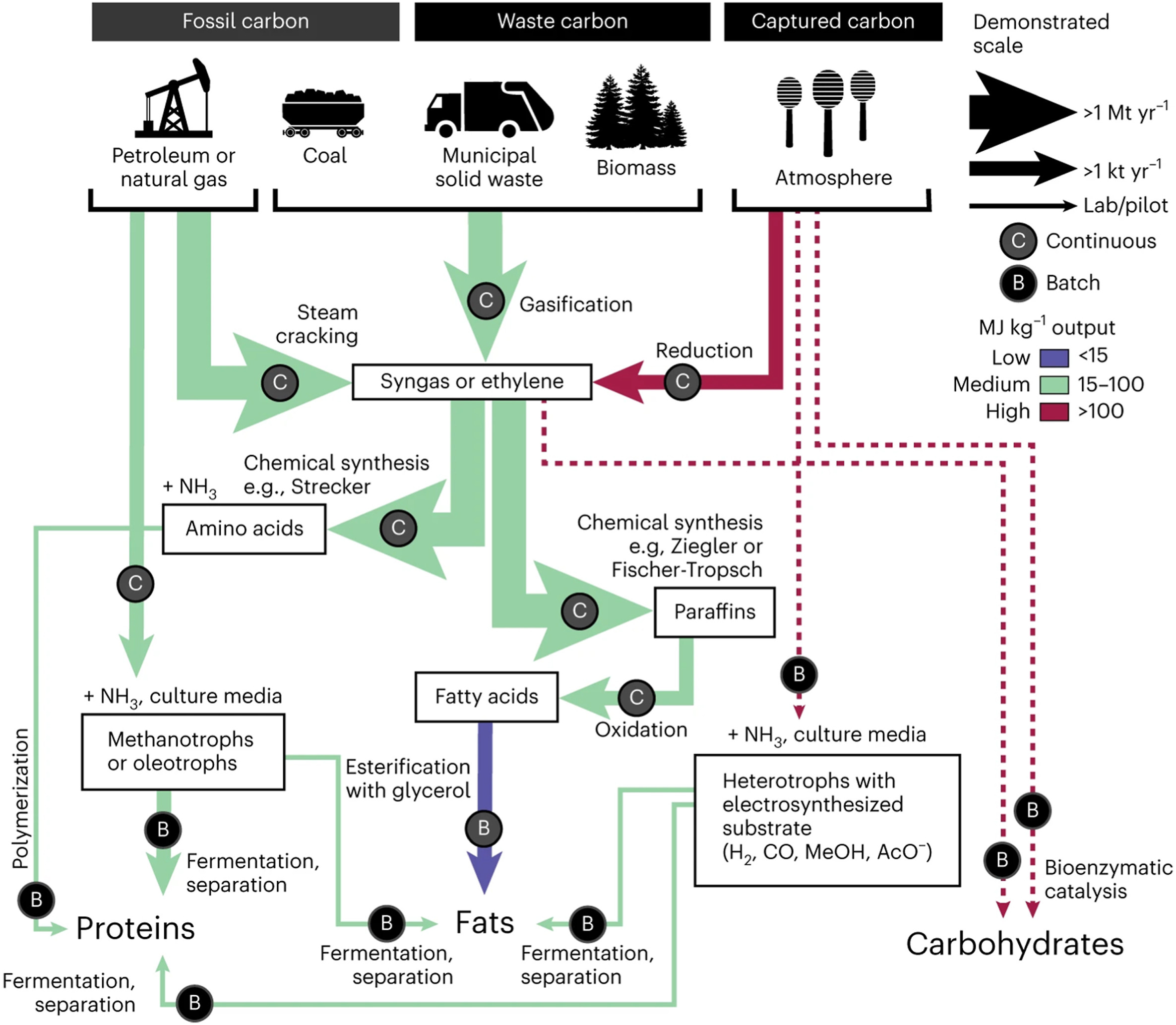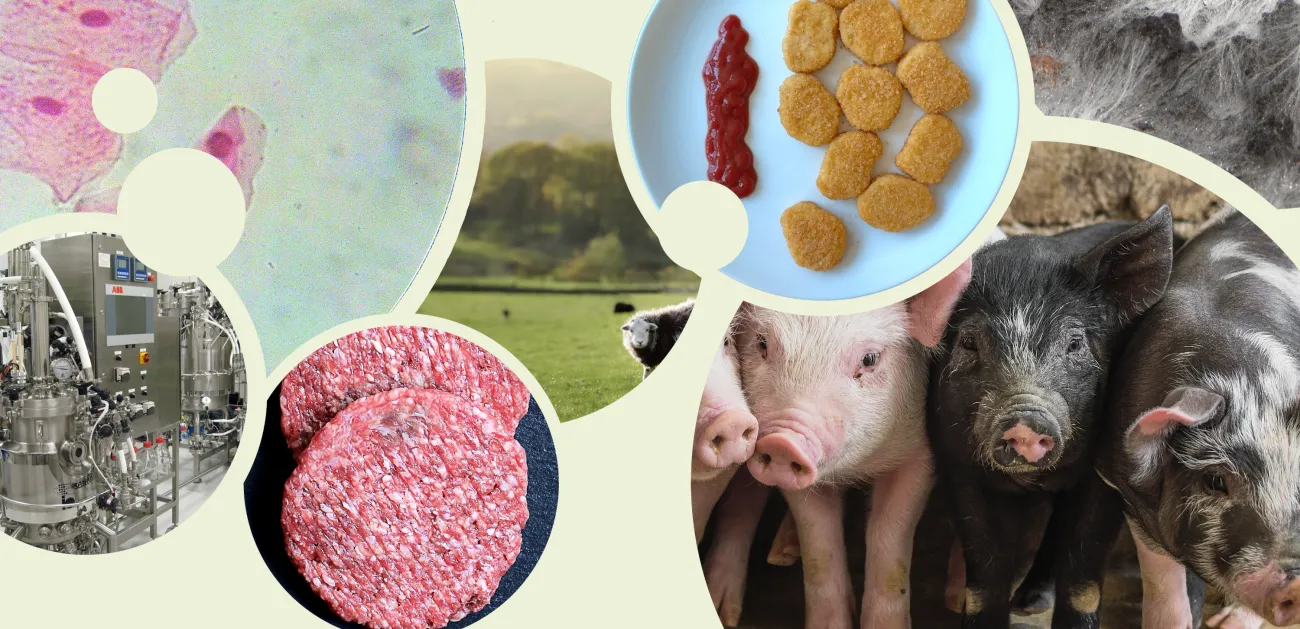This paper reviews non-agricultural food production methods, or ways of producing food that don’t rely on standard land, water and energy use. It provides detailed descriptions of these methods including “air protein” or protein derived using only CO2 and H2 from the air. It also explores the ethical and logistical considerations to advance these technologies to increase resilience to global catastrophes such as sun blocking volcanic winters.

Summary
This paper provides a review of non-agricultural food production methods, or ways to produce food that don’t rely on standard land, water and energy use. It explores these methods with special attention to their potential under extreme global catastrophe events such as global volcanic winters which would block out sunlight and significantly change current weather patterns. The authors argue that increasing environmental pressures are driving food-tech companies to explore new ways of reducing CO2 emissions and produce food using less water and land than conventional agriculture.
The authors are interested in non-agricultural methods to produce all nutritionally necessary food for human diets. They review methods for the synthetic production of fat, “air protein” - that is, protein produced through gas fermentation from CO2 and H2 and mass production of carbohydrates from captured atmospheric carbon dioxide. The authors pay special attention to non-agricultural food production methods which complement traditional food sources and could be used in catastrophic scenarios in which industrial manufacturing capacities remain. Figure 1 details several non-agricultural food production pathways.

Figure 1: Potential pathways for the non-agricultural production of food from existing raw materials.
The authors review several technologies under four broad areas of research: single cell proteins and oils, microbial cell factories for food production, in vitro BioTransformation (ivBT) and chemical synthesis of food.
According to the authors, single cell proteins and oils have a higher diversity of development compared to the other forms of non-agricultural food production methods. They review gas, liquid and solid fermentation technologies which can produce cells from inedible plant material, fossil fuels, industrial and agricultural by-products and CO2 from the air. These cells can then be turned into protein- and fat-rich food ingredients. For example, CO2 and H2 can be used as a carbon and energy source for specific microorganisms to produce what has been coined “air protein”, or potential nutrition bulk biomass using only gaseous molecules from the air. The authors note several companies working on this technology including Solar Foods, NovoNutrients, Avecom and Deep ranch.
Microbes can be used as cell factories for food production instead of being grown in fermentation processes to be consumed directly. This means the microorganisms can be used to convert resources into food products. The authors present an example of the biosynthesis of essential nutrients from sugars using precision fermentation. In this process, microorganisms can convert sugar into macronutrients, most major vitamins and all nine essential amino acids. They note this process may be especially important in global catastrophes which limit crop growth.
In vitro BioTransformation (ivBT) combines natural and artificial enzymes with artificial membranes or organelles to produce valuable biological compounds which can be used in food production systems. The authors note this process as important to overcome some limitations of the previous biological methods which can limit yields of desired compounds. It also allows for a higher degree of selectivity in the process of building specific compounds. They emphasise the potential of this process as a way to produce starch and glucose derived from cellulose.
Food can also be produced through chemical processes without the need for biological pathways. The authors note several common chemical processes which can produce vitamins and amino acids and the chemical conversion of simple chemical structures such as carbon, water and hydrogen into carbohydrates.
The authors discuss the relative level of readiness of these technologies. They note that various single cell proteins and synthetic fats derived from CO2 are already being developed as new products whilst other processes such as developing carbohydrates from CO2 need more research and development. They provide several recommendations which may benefit the development of these technologies including conducting food safety and nutritional studies, working on regulatory approval of the foods specifically for catastrophe readiness, investing more into research and process optimization and increasing government support for these supposedly more resilient food technologies.
They also provide a brief discussion of important ethical considerations. They support consideration of the potential displacement of agricultural workers and the impact these technologies may have on livelihoods. They call for more research on the importance of the perceived “naturalness” of these products for consumers. They also consider the potential increased demand for mined minerals and metals for these technologies compared to industrial factories and agricultural machinery.
The authors conclude by stating there is significant potential for these products to have a place in the wider food system. They cite that the entire global demand for sugar could be met through the conversion of biomass derived from corn stalks, wheat straw, leaves, and wood without increasing wood removal. The authors especially support the use of biological fermentation processes which have demonstrated the capacity to produce all major macronutrients, essential amino acids and fatty acids and multiple vitamins and micronutrients important for the human diet.
Abstract
The growing human population requires consistent access to nutritious and sustainable food to thrive. To this end, non-agricultural, closed-environment food production methods can complement agriculture while increasing the resilience of the global food system to climate shocks, biological threats, environmental threats, trade restrictions, and even extreme scenarios such as abrupt sunlight reduction (e.g. from a volcanic winter or nuclear winter). This review describes the existing production processes and recent developments in non-agricultural food production, including the activities of companies carrying out established processes and of those developing innovative production processes. The potential of fermentation for production of single cell foods and for biosynthesis of key nutrients, and the nonbiological synthesis of food compounds such as from CO2 are reviewed in depth. The study has a special focus on potential response to global catastrophic food shocks that disrupt agricultural production. The enormous potential for food production via key non-agricultural pathways was described and quantified. All macronutrients can be produced by both biomanufacturing and nonbiological synthesis, independently from agriculture, even using CO2. These technologies are capable of synthesizing all amino acids, as well as the essential fatty acids and multiple vitamins and micronutrients of interest. Many of these pathways are relevant industrially and resilience-wise compared to agricultural pathways due to their potential to produce at either lower cost, improved sustainability, in more extreme conditions and environments (e.g. outer space), or a combination of these. More research and resilience work is urgently needed to realize their potential.
Reference
García Martínez, J.B., Behr, J., Denkenberger, D.C., 2024. Food without agriculture: Food from CO2, biomass and hydrocarbons to secure humanity’s food supply against global catastrophe. Trends in Food Science & Technology, 104609.
Read more here. See also the TABLE explainer Nature Knows Best? Naturalness in the Ultra-Processed Foods Debate




Comments (0)